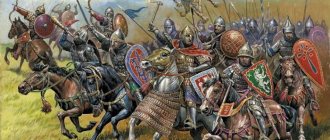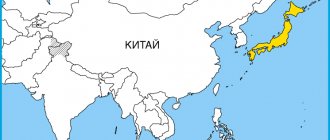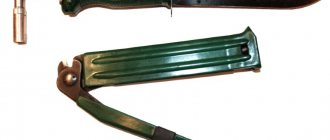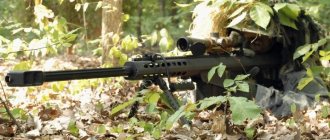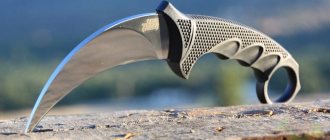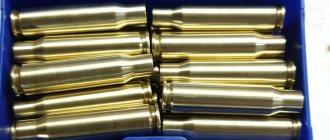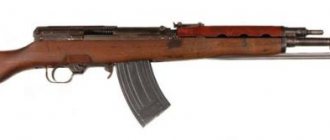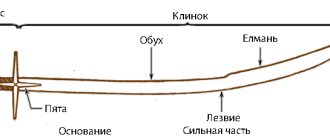Subversion is as old as prostitution, journalism, espionage and diplomacy. That is, it arose in those days when man became intelligent and picked up a club. It was from then on that warring tribes, and then states, began to practice secretive and brutal struggle in the camp of enemies.
We will not go into history, but will talk about those people who were engaged in such dangerous and risky activities during the years of the USSR.
Soviet saboteurs showed themselves especially clearly during the Second World War. They caused significant damage to the German army. But after the victory they did not give up on such activities.
On the contrary, the skills of sabotage groups were constantly improved. These groups were, as a rule, part of separate Spetsnaz reconnaissance battalions. They formed a special platoon in such a unit, and were usually stationed on the territory of disciplinary battalions.
It is very comfortable. The entire area is fenced with a high fence with several rows of barbed wire. It’s easy to fence off a special area for training, and you can keep the “dolls” without any hassle.
And such platoons were disguised as sports teams. Runners, wrestlers, boxers, shooters. The Soviet government spared no money on sports, and athletes delighted people with their achievements not only in the Union, but also traveled abroad. Therefore, special platoons had the opportunity to navigate a specific area not only by map.
The most important thing in a saboteur’s equipment is, of course, a parachute, and in second place are shoes. During the years of Soviet power, it was something between shoes and boots.
A hybrid that combines the best qualities of boots and boots. The official name is BP: jumping boots.
They were made of thick, soft cowhide, and weighed much less than they looked. There were a lot of belts and buckles. Two straps around the heel, one wide around the foot and two around the calf. The straps were also soft.
Each shoe has absorbed the experience of thousands of years. After all, this is exactly how distant ancestors went camping.
They wrapped the leg in soft leather and then tied it with straps. That’s why sabotage shoes were made like this – soft leather and belts.
But the main thing about these boots were the soles. Thick, wide and soft. Soft does not mean fragile. Each sole has three titanium plates. They are superimposed on each other. Durable and flexible. They protected their feet from thorns and stakes, which are always scattered in abundance on the way to important objects.
The pattern on the soles was copied from the soles of soldiers' shoes of potential enemies. That is, a saboteur could leave behind a standard American, German, Spanish or any other trail.
But that was not the main trick. The jump boot had a heel in front and a sole in the back. This was done so that when the sabotage group walked in one direction, the tracks would be turned in the other. It is clear that the heels were made thinner and the soles thicker, so that the foot would be comfortable, so that moving the heels forward and the sole backwards would not create difficulties when walking.
Of course, you can’t fool an experienced tracker. He knows that when walking fast, the toe leaves a deeper indentation than the heel. But how many real trackers are there? And who would come up with the idea of a boot that has everything the other way around?
Popular articles: Underground base in Balaklava
Who will fully understand that if the tracks lead to the east, then the person goes to the west? It must also be taken into account that a group thrown behind enemy lines follows each other. So it is impossible to determine the number of people, and besides, if many feet have passed along the trail, then it is almost impossible to detect the difference in the depressed soil between the toe and heel.
Socks were required with the BP, but only of one type - thick and made of pure wool. They dressed both in the sultry desert and in the winter taiga. These socks keep you warm, protect your feet from sweat, don’t chafe, and don’t wash out. They were given two pairs of these socks - whether you go for a day or for a month.
Linen is fine linen. It should be new, but slightly worn and washed at least once. Second underwear was worn over the underwear. It was made of thick soft ropes as thick as a finger and was a mesh. This was done so that there would always be an air gap of almost 1 cm thick between outer clothing and underwear.
Smart heads came up with this. If it’s hot, if you’re sweating, if your whole body is on fire, then the protective mesh is your salvation. Clothes do not stick to the body, and the ventilation underneath is excellent. In cold weather, the air layer stores heat and weighs grams. The grid also had another important purpose, taking into account the fact that Soviet saboteurs walked more often through forests than through open areas. And in the forest, the most terrible thing, as you know, are mosquitoes.
A mosquito's nose, piercing the clothes, falls into the void, but does not reach the body. This helps people a lot, because they can lie in a swamp for hours under the ringing mosquito itch.
Trousers and a cotton jacket were worn over the underwear. Triple seams everywhere. The clothes are soft and durable. On the folds, on the elbows and knees, the material is triple-layered everywhere for greater durability.
A helmet was put on the head. In winter, leather, fur with a silk comforter. In summer - cotton. The helmet consisted of 2 parts. This is, in fact, the helmet and mask itself. The landing helmet was made exactly like a human head, covering the neck, chin and leaving only the eyes, nose and mouth open. In severe frosts and when camouflaging, the face was covered with a mask.
The set also included a jacket. Thick, light, warm and waterproof. You could lie in it in a swamp or sleep in the snow. Length to mid-thigh. Wide at the bottom. The jacket came with long tails.
They covered the body right down to the toes. These floors were easy to clip on and off. The lining of the jacket is soft on the inside, but the fabric on the outside is rough. The color is light gray, like last year's grass or dirty snow. A white camouflage robe could be worn over the jacket.
All the saboteur’s equipment fit into the RD - a landing backpack. It had a small rectangular shape. To prevent the backpack from pulling the shoulders back, they made it rectangular, wide and long. Its mount was designed in such a way that it could be secured in a variety of positions: on the chest, high on the back, on the belt.
Wherever the Soviet saboteur went, he had only one flask of water - 810 grams. In addition, he had a bottle of brown disinfectant tablets.
You throw such a tablet into water contaminated with oil, dysentery bacilli, and soap suds, and in a minute all the dirt settles. The top layer can be drained and drunk. True, the water has a pungent smell of chlorine, but when you are thirsty, you drink such water with the greatest pleasure.
Popular articles: Order of VICTORY. For loyalty to the Motherland. Genuine Rubies
The saboteur was given the same amount of food for any duration of the task - 2765 grams. While performing a mission behind enemy lines, food, water, and ammunition could be dropped from an airplane.
But this might not have happened. Then live as you know. But almost 3 kg of food was considered a good norm, taking into account the calorie content of special food.
Also in the RD there were 4 boxes of sapper matches. They did not get wet and burned in any wind. There were 100 tablets of dry alcohol. Soviet saboteurs did not have the right to light a fire. Therefore, they warmed themselves and cooked food on the fire of the tablet. There were also medical pills for various diseases and poisonings.
The kit included: a towel, a toothbrush, toothpaste, a safety razor, a tube of liquid soap, a fishing hook with fishing line, and a needle and thread. There was no comb included, because those going on missions had their heads shaved bald. They sweat less, and wet hair does not interfere.
As for weapons, there were 2 options. Complete set and lightweight. The full one included an AKMS assault rifle and 300 rounds of ammunition for it. Some machine guns additionally had a PBS - a silent and flameless shooting device - and an NSP-3 - an illuminated night sight. Each person performing the task also had a P-8 silent pistol and 32 rounds of ammunition for it.
In addition, there was a sabotage knife-strop cutter and 4 spare blades for it. The knife is not quite ordinary.
A strong spring was built into the blade. If you remove the safety and press the release button, the blade will rush forward with enormous force, and the hand with the empty handle will be thrown back.
The range of the blade was 25 meters. The complete kit also included 6 grenades, plastic explosives and directional mines. The lightweight kit includes a machine gun with 120 rounds of ammunition, a silent pistol and a knife.
Purpose of the kit
First, let's figure out what the specifics of playing in such a role are, in what conditions it is expected to act and what tasks to perform. The set of equipment that we will carry with us depends on this.
Let's start with the conditions. It is intended to operate in forest areas with a minimum of buildings.
The main tasks performed are reconnaissance, sabotage in the rear, ambushes and short fire raids .
As you understand, most of the time we will have to camouflage, crawl and lie down.
The saboteur must avoid protracted battles, trying to quickly bite the enemy and move away. Mobility and the ability to quickly escape after contact with the enemy are critical. A large amount of ammunition is not needed.
Necessary equipment
The chosen conditions indicate that we should take only the most necessary things to complete the tasks and, if possible, get rid of everything unnecessary.
Therefore, we take with us:
- 6 shops;
- 3 grenades;
- 2 smokes;
- package of balls with loader;
- a small supply of water and food;
- navigator to understand exactly where we are;
- gun.
Sniper saboteur's luggage
The number of weapons and things that a sniper-saboteur takes on a raid is very varied. There are at least a couple of short-barreled weapons, several knives, spare optics, rope and much more. But let's look in more detail at what exactly is required for a shooter operating in isolation from the main troops, the so-called free hunt, when separation distances from the main forces are up to one hundred kilometers and last more than a week, and the sniper also becomes a scout. These hunters work in pairs. Their task is to find and destroy the highest priority living target in their hunting area. A good sniper can alter or make any equipment seventy to eighty percent on his own, because sniping is not just a profession - it is a lifestyle, and an easy path to death.
Backup Weapon:
A backup weapon for a sniper is the last hope for salvation if detected. Only in films does a shooter with a large-caliber rifle shoot back at a special forces company. Nowadays, there is no need to make a frontal attack on a sniper and come under his fire. It’s enough just to send the approximate coordinates of the shooter to a battery of rocket-propelled grenade launchers, and that’s it.
write letters to the next world. Therefore, a spare weapon is taken into account for a battle within twenty to thirty meters. Basically it is a small pistol with a small caliber silencer (up to nine millimeters) for covert work at extremely short distances and a powerful short barrel. As funny as it may seem, these are often very large-caliber revolvers with an elongated barrel (I would like to note that in our army the choice of weapons for a sniper is very small, these are PB or APB, and only anti-terrorist units and the GRU can boast of their arsenals and permission to freely choose a barrel for surgery). Although such giants are not rapid-fire, they have high accuracy and a strong stopping effect, incapacitating a fighter even in heavy body armor. As for noise, stealth in the event of a fight at distances accessible to these monsters will no longer be important, and a good shooter from a .45 caliber revolver is able to shoot a drum in seven seconds, while knocking out sixty to seventy points out of a hundred, you must agree, this is very not bad for a hand howitzer. If we take into account the high reliability and the ability to avoid misfires, then it is just right for the harsh conditions of a long-distance raid. The ammunition is basically minimal for a quick battle (the sniper’s main weapon is his stealth and cunning), it is better to take more anti-personnel mines and grenades, but more on that later.
Knife:
The most interesting place in a sniper’s weaponry is occupied by a knife; it is not only a weapon for a covert attack, but also a universal tool. As the main knife, they take something with a trick, for example, HP. This knife is excellent for hand-to-hand combat as a cutting and piercing weapon, but is not suitable for a covert attack. To remove a sentry, you need a knife with the narrowest and thinnest blade possible. Only inexperienced fighters cut the throat of a sentry, since such “work” leaves a lot of blood, which can give away the attack. Specialists also have a kind of “combat etiquette”, because every professional understands that he himself may be in the place of the “removed” sentry, and then it is better to die quickly and without suffering. A blow to the body with a simple knife may be ineffective, since modern body armor has a layer of Kevlar or other polymer that holds the blow of a cutting weapon. However, a narrow blade with a sharp end simply pushes the threads of protection apart with a sufficiently strong blow, and it also passes between the plates much better than a regular knife. A universal knife, built according to the “Swiss” pattern, is also required, which will contain all the necessary tools, from wire cutters to a small drill. This set will always help you set a mine and open canned food.
Unloading:
The correct placement of things on the shooter’s body also plays an important role. Usually the weight of the equipment is quite large and they do not take it completely with them during operations, leaving it in caches. You should always carry everything you need with you, the rest should be packed in a RD or a backpack, because suddenly you have to leave your backpack with all your things and move on, or it will be lost during the transition. To make wearing all this stuff more comfortable, they came up with an unloading vest, only it is seriously different from ordinary “vests” and is sewn to order. The first difference is that there is nothing on the chest and stomach at all; it should be a smooth surface, without loops or protrusions that could get caught on any protrusion while crawling and prevent the shooter from moving forward. The inside of this vest is lined with thermal and waterproofing and has elastic plates similar to silicone pillows, which will allow you to lie comfortably even on sharp stones.
The equipment location is as follows:
Right shoulder - a coil of thin cord Right bicep - empty (in order to avoid interference when throwing the rifle to the shoulder) Right wrist to the elbow - compartments for magazines of the main pistol Right armpit - a knife in a hidden sheath (located with the handle down) Right on the belt - empty ( so as not to interfere with the elbow when aiming from a rifle while standing) On the right behind the back is a mini sapper blade. Right thigh is the main weapon. Left shoulder is a dressing package, painkillers. Left biceps – lantern, lighter. Left wrist – GPS Left armpit – spare pistol Left on the belt – pyrotechnic kit, first aid kit Left rear – coil of sling and carabiners, can of spray against dogs and other wild animals (scares off and throws off the trail) Left hip – spare pistol magazines, bag with booby traps. Behind his back is a camouflage blanket, a pouch with rations and ammunition for a rifle. It is this arrangement of equipment and weapons that is most effective for covert movement while crawling and fighting while lying on the ground.
Satchel:
No soldier can fight for long without the minimum necessary things: food, clothing and a comfortable place to sleep. Everything needed for this fits into the RD or backpack. Packing is carried out according to the weight and primary importance of things; heavy things and things of secondary importance are placed at the very bottom of the backpack, this allows you to lower the center of gravity. The sleeping mat is rolled up and fastened at the bottom, this allows you to sit without taking off your backpack, while the mat will serve as a “stool” and save your butt from dampness and cold. This is very important in combat conditions, since a cold prostate or kidneys will force you to go out more often to relieve yourself, which is extremely inconvenient when lying in ambush.
Ration:
The most important component of any raid is nutrition; without food, a fighter loses strength and, as a result, gets tired faster. As a result, by the end of the raid the soldier turns into an indifferent person whose only desire is to sleep and eat. The size of the ration must be calculated based on the fact that the fighter will need at least four thousand kilocalories per day, while the weight and volume should be minimal. Nuts, chocolate, protein bars, freeze-dried meat are suitable here. Canned food is taken at a minimum, since it weighs quite a lot, but for the first two or three days of the raid you can take it. Meals are generally taken on the go, so as not to leave traces, and alcohol tablets need to be burned on a sapper blade, covering them on top with a jar of coffee with several holes punched in it. This method of heating water will make it possible to maintain blackout and use thermal energy as efficiently as possible.
Flask:
If a person can live without food for about a week, then without water only three days. That is why there are no liter flasks familiar to the military. For long-distance raids, they use a “soft flask” - a corrugated container made of elastic material, sewn into the unloading vest from the back. Such a waterskin can hold up to six liters of water, while it serves as an “airbag” for the back and perfectly softens shocks. The corrugation compresses the flask and prevents water from splashing inside, which is not unmasked by the shooter when walking. Access to water is possible through a small plug on the top or a tube with a valve attached to the shoulder. As soon as you squeeze the valve with your teeth, the water itself will flow through the tube under the force of compression. This is the method that allows you to drink while making a minimum of movements and without being distracted from observation.
First aid kit:
When you open a soldier's first aid kit, you realize how much extra there is. A professional’s first aid kit is equipped with only three types of medications: painkillers, disinfectant tablets and a strong antibiotic. Everything else is dressing material.
Rope:
A good sniper has a lot of ropes. There is a thin fishing line for tripwires and signal mines, and there is a regular cord for tying the “tongue”. For walking in mountainous areas or working in city conditions, take with you a simple parachute lanyard. It is quite durable and thin. Many people have probably heard about paracord belts. We do something similar here, only the rope is made using Kevlar thread, which increases its strength significantly; the only disadvantage of such a cord is its lower flexibility and elasticity. A good belt with five or six loops (the width of a belt) will give forty meters of reinforced thread, and it will take thirty seconds to unravel.
Pyrotechnic set:
In general, the words sniper and stretching have a very close connection in life. A successfully placed mine in the rear of the shooter's bed will always warn of an approaching enemy or slow down the pursuit. A “bullet mine” is specially made for saboteurs - this is, in fact, a single-shot pistol dug into the ground with the muzzle up or located on a tree. Everyone knows that an anti-personnel mine explodes if it is stepped on or touched by a thin wire that is in the way (the famous “trip wires”). The result is damage either by the force of an explosion (high explosive mines) or by fragments (fragmentation mines).
However, the little-known PMP mine, which will be discussed, stands apart. It doesn't explode, but shoots. And at the same time he never misses - a kind of “underground sniper”. Mines, by the way, do not make mistakes at all. This is a mine in the law. The authors of the Ottawa Convention on the Prohibition of Anti-Personnel Mines left many loopholes for their use. The Convention states: “Anti-personnel mine” means a mine which is designed to explode upon the presence, proximity or direct impact of a person and thereby incapacitate, maim or kill one or more persons.”
But, firstly, no mine can be triggered by the “presence or proximity of a person,” because it does not have intelligence or sensors and cannot detect this very presence or proximity. In all cases, the victim, although unintentionally, sets the mine in motion by influencing its sensitive elements - the target sensors. And secondly, the PMP mine, according to the Convention, is not such a thing at all, because it does not explode, but shoots.
It is a six-centimeter piece of pipe into which the cartridge is inserted. A frame with a striker and a small lever for release are welded at the back. The cartridge is loaded with large shot or notched buckshot; simply chopped nails will do. Such a stretch has a narrowly targeted damaging effect of approximately three meters. This is more than enough for the pursuers to have many wounded soldiers, with whom further advancement would be difficult for the group. There are also push-type mines.
And if you take into account the low price and weight, then such a tripwire or mine is almost ideal.
Grenade tripwires should be installed above the path or as high as possible; it is this technique that will not allow the enemy to escape by falling to the ground. The grenade itself needs to be wrapped in grass or moss, which will hide it from a close look. But the fishing line should not always be stretched above the ground; it can, for example, be tied to a branch, which will definitely be moved away while walking.
However, in any “hunt” the camouflage of the shooter himself also plays an important role, but more on that in my next article.
Cloth
The clothing concept will look like this. Let’s say right away that we spied it from one special unit. In hot and warm weather, we will use compression thermal underwear and 3D camouflage .
From +20 and above this is the best option. We speak from personal experience.
For thermal underwear we will take the Balance set from Stich Profi .
For 3D camouflage, we will take the Chimera kit and a panama hat with 3D leaves . The base is made of lightweight mesh. Leaves made of lightweight, quick-drying textile are sewn on top.
On the one hand, the suit provides excellent camouflage, on the other hand, it weighs practically nothing and has almost no effect on air regulation.
In cool weather, it is best to use layer 5 as a middle layer between thermal underwear and camouflage.
We usually use Sigma 5th layer from ADS , but as far as we know, Stich Profi will soon have its own 5th layer.
In our experience, a set of Balance thermal underwear and the 5th layer of SIGMA allows you to play comfortably at temperatures from +15 to -5.
In this form, clothing allows you to perform all the necessary tasks, disguises and does not add weight.
We're done with clothes, let's move on to equipment.
"Doll"
A doll is a person specially for training. When a saboteur conducts a training battle against his comrade, he knows in advance that it’s all just make-believe. No one will kill him or maim him.
Therefore, interest in training combat is lost. But the doll can kill, but they won’t scold the one who is training too much if he breaks that doll’s legs or breaks its neck.
Soviet saboteurs always performed very responsible work, and therefore their hands should not have trembled at the decisive moment. But so that the commanders were completely sure of this, they gave them these same dolls for training.
And they were invented a long time ago. They were used from the first days of Soviet power. Only much wider than in the 60s and 70s, and they were called differently.
In the Cheka they were gladiators, in the NKVD they were volunteers, and in SMERSH they were called Robinsons. And only during the time of Leonid Ilyich Brezhnev did they become dolls.
They became dangerous criminals sentenced to death. Those fanatics who were old, frail and sick were immediately destroyed after the death sentence was passed. But the strong and strong were used to the fullest before death.
There was talk that those sentenced to death were sent to uranium mines. This is complete nonsense. Ordinary people worked in such mines. Only they were paid 5 times more than workers from other industries.
And murderers and rapists were used more rationally. This is an undoubted benefit for combat training of saboteurs. As for the legal side of the issue, we will leave it on the conscience of the former leadership of the USSR.
But, most importantly, with this arrangement, everyone felt good. Both Special Forces and criminals. The former practiced combat techniques without fear of maiming their opponents, while the latter received a reprieve from death.
At first there were enough gladiators and volunteers for everyone. And in the 70s, a shortage arose. There was a shortage of everything back then. Either there was not enough meat, then there was not enough milk, so the situation with the dolls became tense. And the number of people willing to use them has not diminished.
Therefore, the command ordered their use for a long time, carefully. But this did not greatly affect the quality of classes. Because fighting with a doll is a hundred times more useful than training with an instructor or your colleague.
It was in this environment that real Soviet saboteurs were brought up. They belonged to the elite of the Soviet Army. They had excellent physical fitness, psychologically stable character and were well politically savvy.
Today such troops also exist and perform the same work. It can not be in any other way. After all, sabotage is considered one of the main tactical components of any war. And the fighting on the planet goes on constantly and does not stop for a minute.
The article was written by Maxim Shipunov
Results
Finally, we would like to say that we have long wanted to talk about this concept of selecting equipment for a task.
On the one hand, you don’t have heavy clothes and unnecessary equipment , on the other hand, you have everything you need with you. At the same time, you have good camouflage capabilities .
We have been using this concept of equipment from personal experience for many years, adding, if necessary, a light bib and a backpack to suit the task and format of the game.
And that's all for us! Good ball and good game!
Soviet saboteur's parachute
In the Soviet Army, everyone, regardless of rank, stowed their parachute personally. This also applied to colonel generals and army generals. This rule was very wise. If you crash, then all responsibility is on you, and other people do not bear any responsibility.
The parachutes were stored in a warehouse. They have been sealed and are always ready to use. On each of them there is a receipt on silk: “General Sidorov or Sergeant Ivanov. I packed this parachute myself.”
But sometimes the sabotage group had to pack parachutes immediately before the mission. The installation was carried out in conditions where you would have to jump. If it’s winter and about 30 degrees Celsius, then styling is freezing. And it took 6 hours.
First, the parachute tables were prepared. This is a piece of long tarpaulin, which was spread on concrete and secured with special pegs. Laying was carried out in 2 stages. First, the two of us pack your parachute: you are the eldest, and I am the helping one. Then we pack my parachute. Here the roles are already changing. After this, reserve parachutes are stowed. Senior and helping in the same order.
First, the lines and canopy are stretched across the parachute table. After this comes the deputy for the PDS - the deputy commander for the parachute service. His job is to make sure everything is done correctly. Then he gives the command: “Secure the top of the dome.” And again he walks along the rows, checking the correctness of execution.
People may have a lot of styling experience, but no one is immune from mistakes. And if an error is detected, the parachute will be immediately released, and the person will begin packing from the very beginning. And everyone else will stand and wait for the one who made the mistake to do all the work again. And the frost can be bitter.
Popular articles: Balkan frontier. Special operation in Kosovo in 1999
After the packing is completed, people go to warm barracks, and the parachutes remain guarded in the cold. If you bring them indoors, droplets of moisture invisible to the eye will settle on the cold material.
And tomorrow the parachutes will be taken out into the cold again, and the droplets will turn into ice. They will firmly grasp the layers of pircal and silk. This is death. Even a schoolboy understands such a simple thing. But there were such cases, and entire platoons and companies of Soviet saboteurs died.
After stowing, everyone signs on the silk strips of their parachutes: “Captain Vasiliev. I packed this parachute myself.” Tomorrow this Vasiliev will crash, and the culprit will immediately be found. It will be himself.
